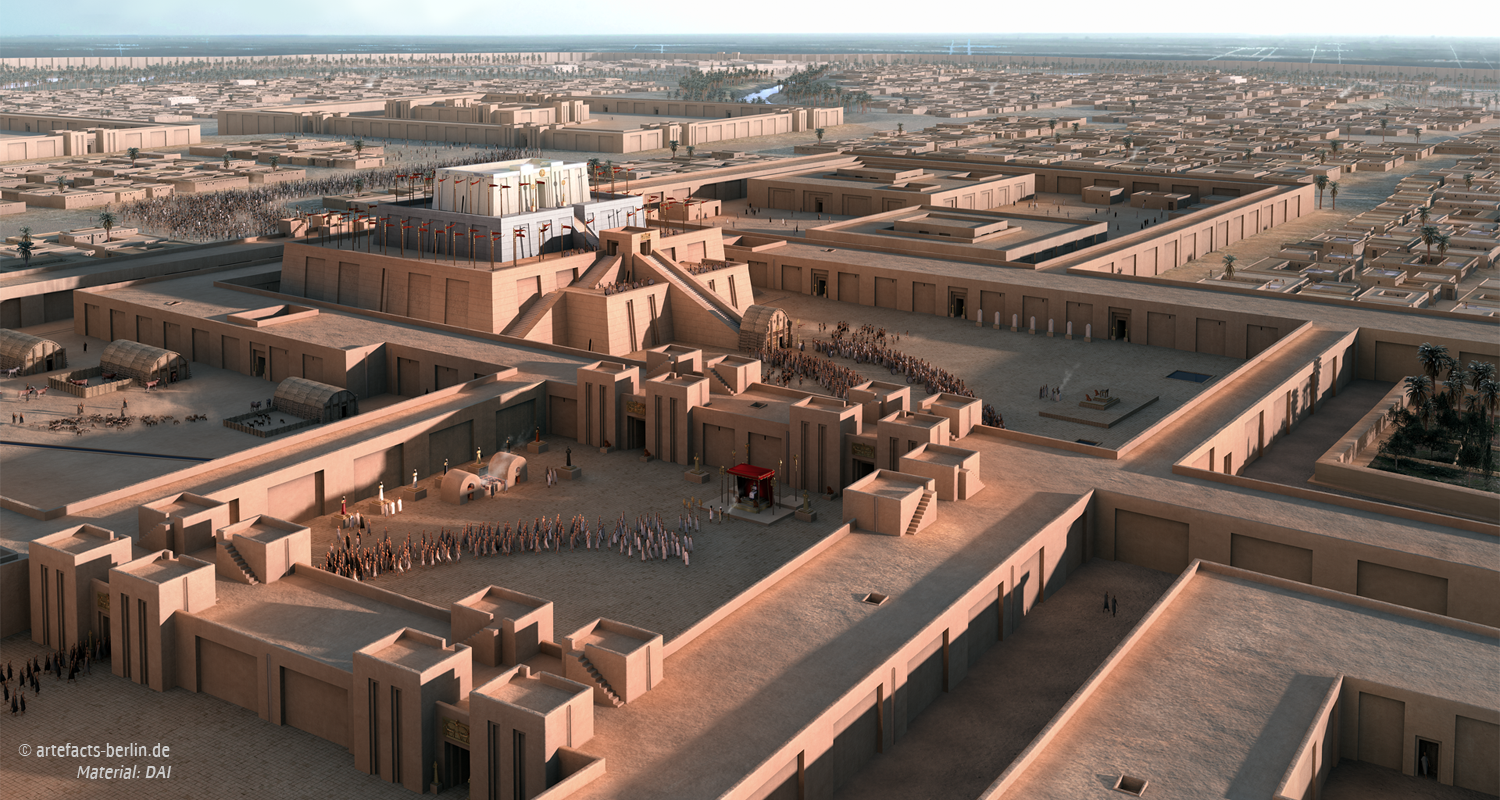Gilgamos and the Eagle

Claudius Aelianus, commonly known as Aelian, was a third century Roman known for his fluent command of Greek and mastery of rhetoric. But he is remembered today as being something of the David Attenborough of his time for his thirteen-volume work On the Nature of Animals – a collection of folktales, stories and observations of animal behaviour.
Fire From the Lion's Neck
Aelian's compendium ranges from the accurate and acutely-observed to the fantastical and seemingly-improbable. He correctly identifies the queen bee (although he calls it a king bee) as gentle and stingless, for example, but he also contends that ants are able to reckon time and never emerge from their mounds on the first day of the month.
Many of his reports seem fairly reasonable, likely based on well-traveled stories, such as this evocative account of Indian elephants:
In India elephants, when compelled by the natives to pull up some tree, roots and all, do not immediately attack it and begin the task, until they have shaken it and have tested it thoroughly to see whether in fact it can be overturned, or whether that is utterly impossible.
While some of his other reports are blatantly outrageous, such as the following description of lions that corrects one myth while introducing several more:
The neck of a lion consists of a single bone and not of a number of vertebrae. And if a man cuts through the bones of a lion fire leaps forth. But they are devoid of marrow, nor are they hollow like tubes. There is no season of the year in which it abstains from coupling, and the lioness is pregnant for two months. Five times does she give birth, at the first birth to five cubs, at the second to four, after that to three, after that to two, and finally to one. . . . But the account which says that they scratch through the womb is a fable.
For amateur zoologists (and cryptozoologists) this compendium is a treasure trove of animal lore which is as fascinating for its misconceptions as its genuine and faithful observations.
The Tale of King Gilgamos
What makes this compendium so valuable for historians is not its colourful anecdotes about animal behaviour, but in how frequently Aelian quotes bits of ancient literature that have since been lost to us. There are entire works which are only known to us because Aelian took the trouble to reference them, and he therefore gives us small hints and insights into the range of literature available in the classical era.
The Epic of Gilgamesh, for example, is the oldest epic poem which has come down to us. Long pre-dating other famous early literary works, such as The Iliad, the Book of Job, and the Mahabharata, near-complete copies of the poem weren't uncovered until the 1850s. This means that until then the only trace we had of the legend was in the scant details of 'King Gilgamos' preserved by Aelian in the following account:
When Seuēchorus was king of Babylon the Chaldaeans foretold that the son born of his daughter would wrest the kingdom from his grandfather. This made him afraid and... he put the strictest of watches upon her. For all that, since fate was cleverer than the king of Babylon, the girl became a mother, being pregnant by some obscure man. So the guards from fear of the King hurled the infant from the citadel, for that was where the aforesaid girl was imprisoned.
Now an eagle which saw with its piercing eye the child while still falling, before it was dashed to the earth, flew beneath it, flung its back under it, and conveyed it to some garden and set it down with the utmost care. But when the keeper of the place saw the pretty baby he fell in love with it and nursed it; and it was called Gilgamos and became king of Babylon.
Aelian allows that this story is probably mythical, but what's impressive here is just how many details he gets wrong. Aelian contends that Gilgamos:
- Was born of a human mother
- Had a human father who was likely a palace servant or guard
- Was saved by an eagle and raised by the palace keeper
- Usurped his maternal grandfather, a mortal, to become the king of Babylon.
However, from copies of the Epic of Gilgamesh preserved on clay tablets, and other primary sources such as the Sumerian King List, we know the following about the mythical Gilgamesh:
- He was born of a divine mother, Ninsun, the cow goddess, while his father was the mysterious Lugalbanda – "an invisible being, the lord of Kulaba."
- His maternal grandfather was the supreme sky god Anu
- That there is a story of Gilgamesh and an eagle, but the eagle doesn't save Gilgamesh as an infant (see the section below).
- Gilgamesh was the king of Uruk and came to be king by unexceptional means – the city of Babylon didn't come to power until long after Gilgamesh was supposed to have lived.

It's funny to think, but had the Mesopotamians written on a material more perishable than clay (such as papyrus, parchment, or even stone or metal), then all we know of the epic would be these fanciful and misleading details preserved by Aelian. Which in turns leads us to a further difficulty, that we can't put all our trust in any of the references in Aelian (or in similar compendiums) unless we have corroborating sources.
And we must also consider the alternative – that Aelian has preserved genuine lore about Gilgamesh, but that we haven't uncovered the tablets that would validate him. This is unlikely – Aelian has probably just confused Gilgamesh with a different legend – but we do sometimes see sources that were previously considered unreliable vindicated by new evidence or research.
Gilgamesh and the Huluppu-Tree
Incidentally, there is a genuine myth about Gilgamesh and an eagle. The myth is old – a surviving copy dating back to 2000 BCE undoubtedly reflects a tradition that is older still. It goes something like this:
After the Creation, and after the Flood, and after the gods took their places in their pantheon, on that day, a weeping willow took root along the Euphrates. But it was soon uprooted by the South Wind and carried down the river, before being rescued by a servant of the goddess Inanna (Ishtar) and placed in the temple garden of Uruk.
Inanna tended to the tree, and dreamed of when it would mature so that she could carve from it her holy throne and holy bed. In time the tree grew large but Inanna couldn't cut it down. A snake 'who knows no charm' had made its home around the trunk of the tree. In its crown an eagle (a zu-bird) had made a nest for its young. And in the branches of the tree the demon, Lilith, had built a house for herself.
Inanna wept, and told Gilgamesh the whole story. (Literally – the whole story. The Mesopotamians were big on repetition in their literature.) So Gilgamesh put on armour weighing fifty minas (28.5 kilograms), which he lifted easily, and armed himself with a bronze axe weighing seven talents and seven minas (maybe 400 kg).
With an abrupt swing he beheaded the snake. The eagle flew with its young to the mountain and Lilith dismantled her home and ran to the desert. Then, with help from the 'sons of the city', Gilgamesh made a bed and a throne for Inanna from the tree. For himself, he made a pukku and a mikkû. (We still have no idea what these objects would be – maybe ceremonial objects, maybe a ball-and-stick set – but they do recur in another myth when they accidentally fall into the netherworld and have to be retrieved by Gilgamesh's servant.)
The Takeaway
Ancient history is a bit of a house of cards. We are forced to extrapolate from fragile, disparate sources in order to reconstruct historical events that are far beyond the reach of living memory. I touched on this in my last post, and why documentary analysis of the Gospels counts for reliable evidence in favour of a historical Jesus despite the myriad problems with those accounts. An important element of ancient historical research involves keeping these thoughts in the back of your mind, and being prepared for the possibility that a new discovery may completely discredit an ordinary or innocuous detail that you took for granted.
Image credits:
Safari in the Tsavo East national park - Kenya by Alfred Kittu
The Ur III Period by Artefacts Berlin.de


Comments ()